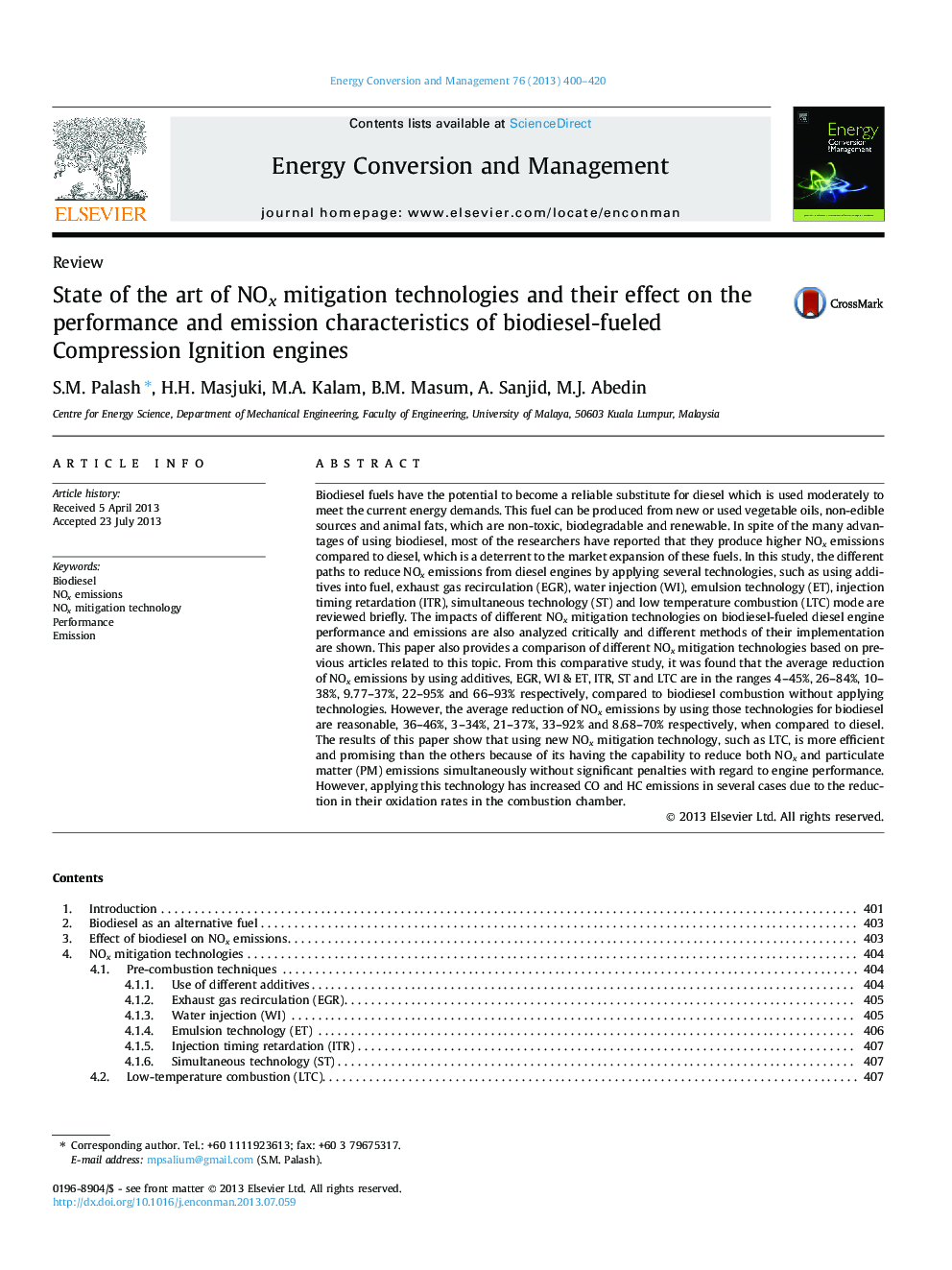| کد مقاله | کد نشریه | سال انتشار | مقاله انگلیسی | نسخه تمام متن |
|---|---|---|---|---|
| 760798 | 1462886 | 2013 | 21 صفحه PDF | دانلود رایگان |

• Different NOx reduction technologies are discussed along with their implementation.
• EGR rate up to 25% is feasible considering engine performance and other emissions.
• ITR technology reduces NOx fairly but increases other emissions, it also reduces performance.
• LTC reduces NOx and PM emissions simultaneously but increases HC and CO emissions.
• Water injection and emulsion reduce NOx (up to 38%) and PM but increases HC and CO emissions.
Biodiesel fuels have the potential to become a reliable substitute for diesel which is used moderately to meet the current energy demands. This fuel can be produced from new or used vegetable oils, non-edible sources and animal fats, which are non-toxic, biodegradable and renewable. In spite of the many advantages of using biodiesel, most of the researchers have reported that they produce higher NOx emissions compared to diesel, which is a deterrent to the market expansion of these fuels. In this study, the different paths to reduce NOx emissions from diesel engines by applying several technologies, such as using additives into fuel, exhaust gas recirculation (EGR), water injection (WI), emulsion technology (ET), injection timing retardation (ITR), simultaneous technology (ST) and low temperature combustion (LTC) mode are reviewed briefly. The impacts of different NOx mitigation technologies on biodiesel-fueled diesel engine performance and emissions are also analyzed critically and different methods of their implementation are shown. This paper also provides a comparison of different NOx mitigation technologies based on previous articles related to this topic. From this comparative study, it was found that the average reduction of NOx emissions by using additives, EGR, WI & ET, ITR, ST and LTC are in the ranges 4–45%, 26–84%, 10–38%, 9.77–37%, 22–95% and 66–93% respectively, compared to biodiesel combustion without applying technologies. However, the average reduction of NOx emissions by using those technologies for biodiesel are reasonable, 36–46%, 3–34%, 21–37%, 33–92% and 8.68–70% respectively, when compared to diesel. The results of this paper show that using new NOx mitigation technology, such as LTC, is more efficient and promising than the others because of its having the capability to reduce both NOx and particulate matter (PM) emissions simultaneously without significant penalties with regard to engine performance. However, applying this technology has increased CO and HC emissions in several cases due to the reduction in their oxidation rates in the combustion chamber.
Journal: Energy Conversion and Management - Volume 76, December 2013, Pages 400–420